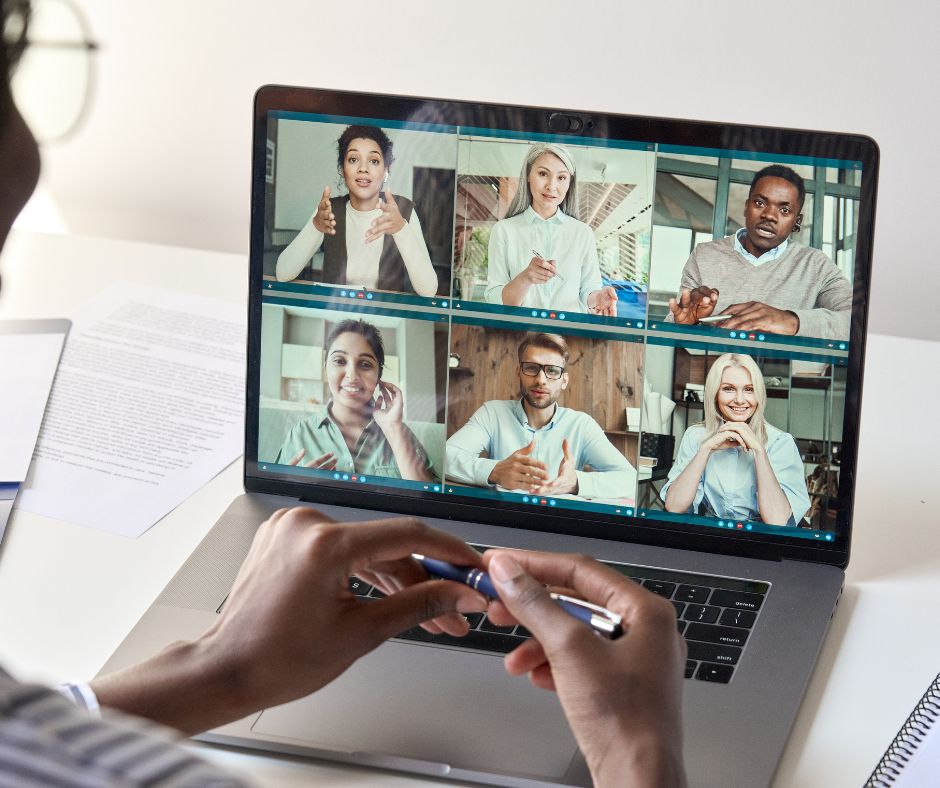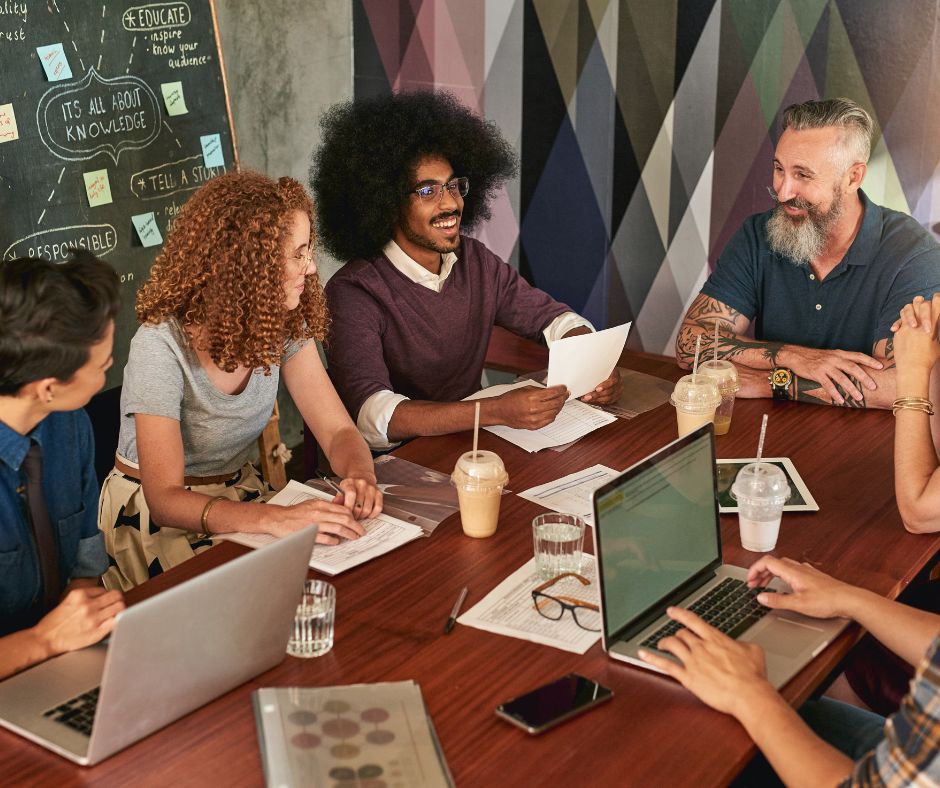Sophie had always been a driven individual. After years of hard work and dedication, she finally landed her dream job as a team leader in a highly competitive industry. Excited and determined to make her mark, she dove headfirst into her new role.
However, Sophie soon realized that leading a team was much harder than she anticipated. The team was filled with talented individuals, but they lacked cohesiveness, and their progress was slow and disjointed. She knew that if she wanted to succeed, she needed to find a way to bring the team together and unlock their full potential.
That’s when Sophie discovered the power of team collaboration. Through trial and error, she learned how to foster a culture of collaboration, and the results were remarkable. The team began working together seamlessly, and their productivity skyrocketed.
In this blog post, we’ll explore the strategies she used to build a better team through collaboration.
What Is Team Collaboration?
Team collaboration is a process that involves the integration of people, processes and technology to achieve a specific goal. It can involve both physical and virtual elements, such as remote working tools or meeting platforms.
Effective team collaboration means everyone involved has a clear understanding of what needs to be achieved and how they are going to contribute to reaching the desired outcome. This could include tasks like decision-making, problem-solving, brainstorming or creating an action plan.
It also requires open communication between members of your organization’s team so that ideas can be shared freely without any judgments or biases. What’s more, it requires trust among team members since everyone must be willing to take risks for collaboration to take place effectively.
What It Can Do For Your Team
Team collaboration can be an extremely powerful tool for any team. By working together, teams are better equipped to come up with innovative solutions that address complex problems and achieve their desired outcomes faster.
It also helps foster a sense of community among team members as they learn to rely on each other’s individual strengths and weaknesses. This in turn leads to higher productivity, better communication and less churn within the team.
What Is Virtual Team Collaboration?

Virtual team collaboration is a form of collaboration that takes place online or through remote working tools instead of in person. It has become increasingly popular due to the rise of digital technologies, which allow teams from all over the world to interact without having to physically meet up.
This type of collaboration can be incredibly beneficial for teams that are geographically dispersed or working on a project with tight deadlines. It helps them stay connected, share ideas and collaborate in real time regardless of their location.
The Benefits Of Team Collaboration
Team collaboration has numerous benefits for any organization. Here are just some of the ways it can improve team performance:
Better Solutions
By working together, teams are better equipped to come up with creative solutions to complex problems. Their collective knowledge and experience allow them to explore multiple approaches and find the best path forward.
Higher Productivity
Teams that collaborate effectively tend to be more productive as they can make decisions faster and move projects along at a quicker pace. This leads to improved efficiency and better results overall.
A Closer Community Means Less Churn
A recent Gallup survey showed that 48% of US workers are actively job searching. Employee engagement is one of the major factors that contribute to this, and team collaboration can help.
Collaboration helps foster a sense of community within the team, which in turn encourages people to stay longer and stick around. This leads to less turnover and more stability within the team.
The Importance Of Communication
Communication is key for any successful collaboration effort. Without it, teams become disconnected and unable to work together toward a common goal.
It’s important that everyone involved in the team understands their role, feels heard and knows what to expect from each other. This requires frequent communication between the members so that all ideas can be shared openly without any judgments or biases.
Communication Breeds Trust
An aligned team is built on trust and to build trust communication must be clear, open and honest. This means team members need to be allowed to voice their opinions without fear of judgment or criticism.
By creating an environment where everyone feels comfortable speaking up, teams will be more likely to share ideas, discuss solutions and work together towards a common goal.
Building Trust Within The Team
Trust within any team is essential for collaboration to take place effectively. This means that all members need to feel valued and respected so that they can share their opinions freely without any fear of judgment or criticism.
Furthermore, teams should encourage a culture of feedback so that everyone can learn from each other and grow together. This requires creating an open space for discussion where people are comfortable voicing their opinion without any fear of retribution.
Encouraging Diverse Perspectives
To come up with the best solutions, you need to hear various viewpoints from people with different backgrounds. This means that teams should strive to bring together a diverse mix of individuals with different backgrounds, experiences and opinions.
By drawing from a range of different perspectives, teams can come up with better solutions to complex problems and gain new insights that they may not have seen otherwise.
Encourage diverse perspectives by creating an environment where everyone feels comfortable speaking up and ideas are respected. Start by making sure everyone has a voice and is given an equal opportunity to share their ideas.
What Are The Most Important Team Collaboration Skills?
There is no one-size-fits-all approach to team collaboration. Team leaders and consultants recognize that different teams need different skill sets depending on their goals and the tasks they are trying to accomplish.
However, some key team collaboration skills can help you achieve your team-building goals effectively. These include:
Active Listening
Active listening includes not only hearing what someone is saying but also understanding it. This requires paying close attention to the conversation and asking questions when needed. You can implement active listening by listening without judgment and verifying that you understand what the other person is saying.
Creativity
Creative thinking allows teams to come up with solutions that are outside the box, which can lead to more innovative ideas and better solutions. Encourage creativity in your team by giving everyone a chance to brainstorm ideas, encouraging out-of-the-box thinking and rewarding creative solutions.
Time Management
Time management is essential for any team collaboration effort. Without it, tasks can easily be overlooked or forgotten which can lead to missed deadlines and unmet goals. Encourage time management by creating a timeline for tasks, setting clear expectations and following up on progress.
Open-Mindedness
Teams need to have an open-minded attitude when it comes to collaboration. This means being willing to consider different perspectives and ideas and being open to change. Encourage this by creating a safe space for discussion, asking questions and listening without judgment.
Managing Conflicts
Conflict is inevitable in any team but it’s important to manage it correctly so that it doesn’t negatively affect collaboration.
Start by making sure everyone feels heard, even if they disagree with each other. Encourage open discussion and allow people to explain their points of view without judgment or criticism. Once all sides have been heard, work together to reach a compromise that both parties can agree on.
Making Sure People Feel Heard
Collaboration only works when everyone involved feels like they are being listened to and their opinions are respected. Make sure you create an environment where people feel safe expressing themselves and voicing their ideas without fear of judgment or criticism.
Also, be sure to ask questions and listen to the answers. This will help ensure that everyone is being heard and their perspectives are taken into account when decisions are made.
Don’t Let Issues Fester by Avoiding Them
Teams need to tackle conflicts head-on, instead of avoiding them. When issues remain unresolved, they can cause resentment and reduce morale in the team which can hurt collaboration.
Try to deal with any conflicts as soon as they arise and come up with a solution that both parties can agree on. This will prevent any further conflict from arising and keep the team focused on working together towards their goals.
Measuring the Success of Team Collaboration
The success of team collaboration largely depends on how well teams are working together and communicating. To measure this, you need to track metrics like task completion rates, team morale, and the quality of work being produced.
You can also use tools such as Personalysis to get a better understanding of how each member of your team works and what type of collaboration dynamics will best suit them. This helps ensure that everyone is in an environment where they can be productive and happy while collaborating with others.
Follow The Data With Personalysis
Team collaboration is an essential part of any successful business. By listening, being creative and open-minded, managing conflicts effectively, and making sure everyone feels heard, teams can foster a cohesive environment that leads to better solutions, higher productivity, and less churn.
To ensure the success of team collaboration efforts it’s important to measure metrics such as task completion rates, team morale and quality of work produced. With Personalysis you can get valuable insights into your team dynamics so you are always aware of how best to manage them for optimal performance.
Leveraging this data will help create an effective working relationship between your teammates that drives results – from improved communication to more innovative ideas.




